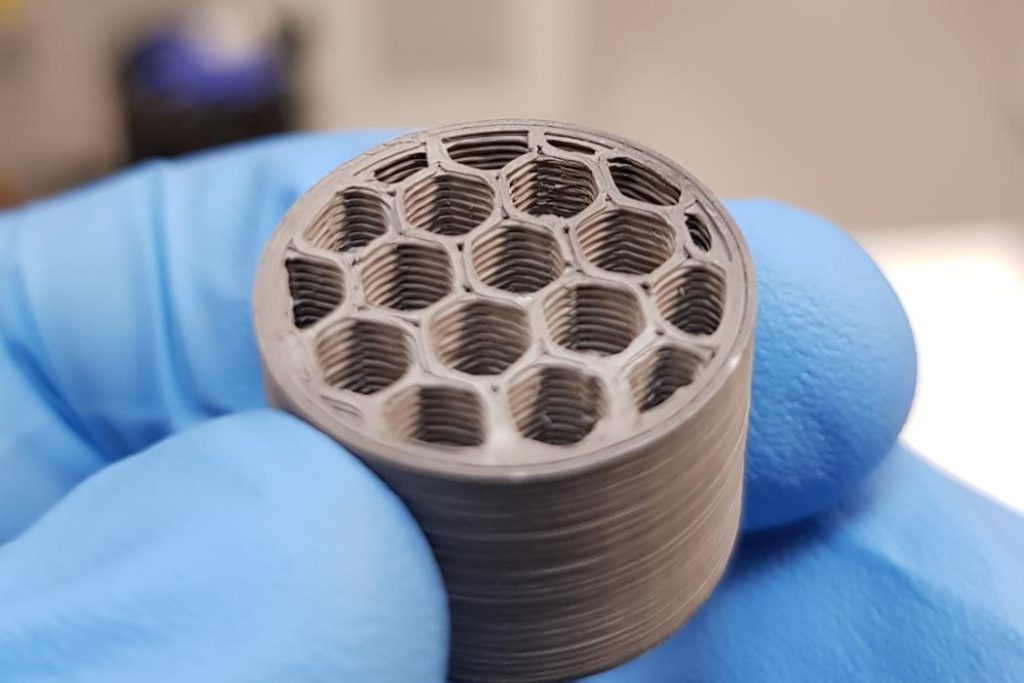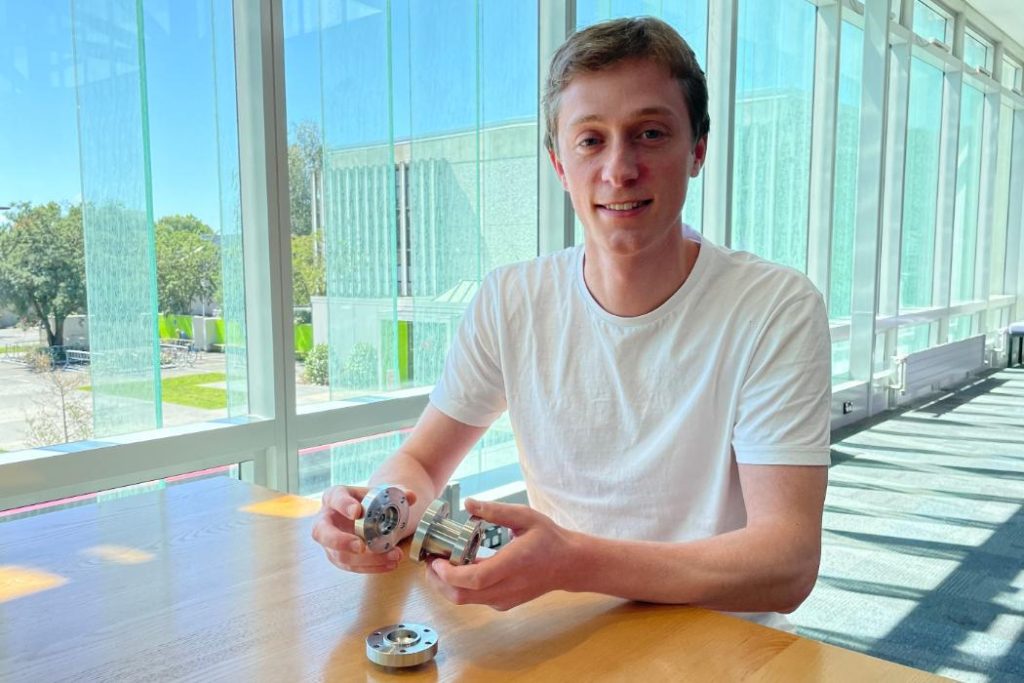A New Zealand-based student engineer has developed a device that’s capable of converting everyday bleaching agents into rocket propellants.
Working from his lab at the University of Canterbury, grad student Simon Reid has come up with a 3D printed catalyst bed, which decomposes hydrogen peroxide into an energetic gas. If this reaction can be perfected, Reid believes it’ll enable bleach to be used as a safer fuel for rockets requiring low-to-medium amounts of thrust, hence he’s now working with local launch firm Dawn Aerospace to test this out.

Identifying a safer propellant
First developed in the late 19th century, hydrazine is still a commonly-used rocket propellant within the aerospace sector today. However, while the substance remains a highly-effective means of fuelling the rockets needed to fire satellites into orbit, it’s also known to be unstable when dry, and it’s so toxic to the human touch that it’s now a suspected carcinogen.
According to Reid, the extra care required when handling hydrazine, including the safety gear and protocols necessary during usage, drive up the price of deploying it too, thus he’s identified the need for a safer, low-cost alternative. Interestingly, the substitute the student has opted for is hydrogen peroxide, a product often used to bleach hair or clean wounds, that only causes mild irritation upon exposure.
To generate thrust from such household bleaches, Reid initially recognized that a catalyst, the likes of which are often made from precious metals, would be required to break it down into a gas. In his case, the engineer opted to use ceramic, likely due to its lower cost than silver or platinum, to 3D print a bed coated in catalyst that effectively triggers a chemical change as hydrogen peroxide passes through it.
“By passing liquid hydrogen peroxide over a catalyst bed it speeds up the decomposition reaction,” explains Reid. “The reaction disassociates the molecule, turning it into water and oxygen. It is the breakup of the molecule that produces a large amount of energy and heat. The heat vaporizes the water and results in a high temperature gas – passing the hot gas through a nozzle provides thrust.”

Using bleach as a rocket fuel
Now two years into a three-and-a-half-year PhD, Reid is seeking to refine the design of his 3D printed bleach-converting catalyst bed. Specifically, the engineer aims to maximize the thrust generated from hydrogen peroxide, while limiting the loss of catalyst from the bed and making all his device’s parts as light and commercially-competitive as possible.
In order to achieve this, Reid has begun working with New Zealand’s state-backed Callaghan Innovation agency, to 3D print devices into geometries with improved properties from other catalytic materials that yield better thruster performance.
One approach the PhD student has found to have particular promise in optimizing catalytic conversion, is 3D printing his bed into a gyroid shape, something not possible via traditional production methods. In doing so, Reid believes his latest design will be an upgrade on its predecessor, in that it’ll minimize catalyst loss, avoid large pressure drops and better balance thrust against fuel concentration.
Moving forwards, the grad student now intends to test the efficacy of his revised catalytic bed and compare the results against prior designs. More broadly, he also aims to work with project collaborator Dawn Aerospace, which uses hydrogen peroxide to fuel its reusable spaceplane, to identify a catalyst that enables it to do so more efficiently.
“Only a few companies are seriously considering hydrogen peroxide,” concludes Reid. “Hopefully by designing these efficient catalysts, we can promote it as a viable alternative to hydrazine, and help make the aerospace industry that little bit safer.”

3D printing’s rocket propellant potential
Additive manufacturing continues to address the needs of rocket builders around the world, not just in the production of advanced propulsion systems, but the combustibles used to power them. One of the highest-profile examples of this is Rocket Lab, a firm that went public last year in a $4.1 billion SPAC merger, which is said to power the Rutherford engines of its rockets via printed propellants.
Back in late-2020, Firehawk Aerospace also raised $2 million towards the R&D of its unique additive manufactured propulsion systems. Powered by a fuel, designed to provide a safer, more reliable, and lower-cost propellant for the engines of satellite launchers, the firm’s 3D printed solid fuel rods were said at the time to deliver a ‘new level of performance.’
Likewise, in a similar project, scientists at James Cook University Australia, have previously come up with 3D printed fuel grains, capable of powering a hybrid rocket motor. Developed in response to the rapid rise in commercial space launches, the team’s commercial polymer-integrated rocket fuels showed strong potential during testing, as an accessible means of firing devices into low earth orbit (LEO).
To stay up to date with the latest 3D printing news, don’t forget to subscribe to the 3D Printing Industry newsletter or follow us on Twitter or liking our page on Facebook.
For a deeper-dive into additive manufacturing, you can now subscribe to our Youtube channel, featuring discussion, de-briefs and shots of 3D printing in-action.
Are you looking for a job in the additive manufacturing industry? Visit 3D Printing Jobs for a selection of roles in the industry.
Featured image shows University of Canterbury PhD student Simon Reid’s 3D printed catalyst bed. Image via the University of Canterbury.


